This was published 6 years ago
Germany's mythical Rhine Gorge: On the trail of a fairy tale
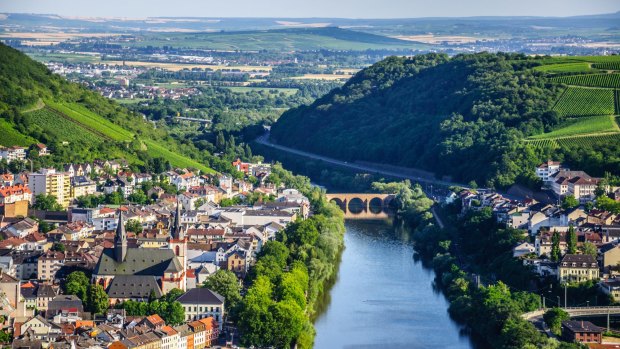
The Rhine winds through Rheinland-Pfalz.Credit: Shutterstock
Entering Germany's mythical Rhine Gorge is like entering a fairy tale, with a centuries-old storyline encompassing avarice, enchantment, desire, romance and courage.
More than just a 65-kilometre stretch of the Middle Rhine Valley between Bingen/Rudesheim and Koblenz, the strongly flowing narrows of the World Heritage-listed Rhine Gorge, guarded by its forest of about 40 hilltop castles and fortresses, is the stuff of legend.
The majesty of its deep-ravined canyons that plunge on average 130 metres, its splendid castles, half-timbered medieval villages and vineyard terraces reflects the majesty of a grand, 1000-year-old history that offers in equal parts strategic, commercial, political and cultural significance.
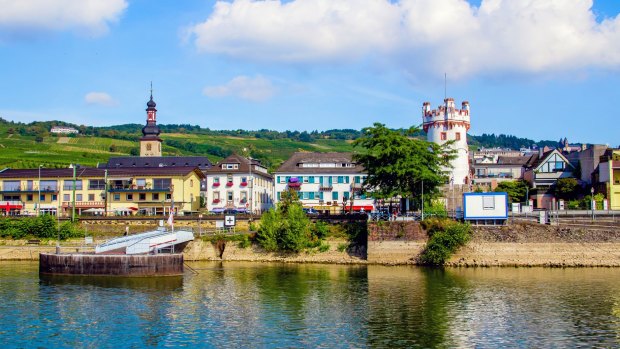
Rudesheim am Rhein, famous town for wine making in the Rhine Gorge.Credit: Shutterstock
No wonder there's a frisson on board our APT river ship, the AmaBella, as we depart Rudesheim to sail past the Mouse Tower into the much-storied serpentine world whose beauty and importance has so powerfully influenced writers, painters, composers and poets.
The ravishing Rhine Gorge is 1000 kilometres into our 15-day voyage from Budapest to Amsterdam.
The sundeck should have been the viewing place but it's cold and grey, so we gather in the main lounge to listen to the cruise director's commentary, darting outside as each new castle or village appears, peering to port and starboard at each new vista. All are anticipating the narrowest throat of the gorge with its strong currents, hazardous rocks and the deadly Lorelei.
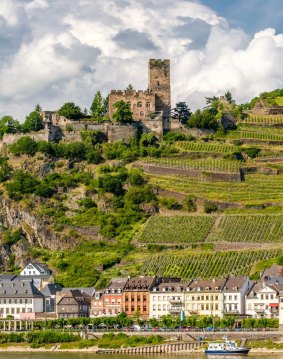
Gutenfels Castle and vineyards near Kaub enthralled 19th-century Romantics who revitalised the area with poems, paintings and prose.Credit: Shutterstock
The Rhine Gorge has linked the southern and northern halves of the continent since prehistory, allowing trade and cultural exchange.
Slicing through the Rhenish Slate Mountains, it enables the cultivation of Germany's famous Rhine Valley wines within one of Germany's 13 recognised wine districts – wines like riesling, grauburgunder (pinot gris), scheurebe (sylvaner-riesling) and aromatic kerner (trollinger-riesling).
This is the strategic section that nobles coveted, building the castles to operate as toll points. This is the stretch – sometimes a border, sometimes a bridge – that was fought over and reduced to ruins until the 19th-century Romantics came along.
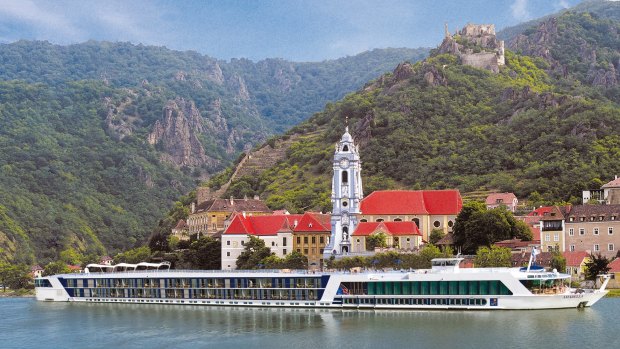
The MS Amabella.
Swooning at its beauty, reacting against rising industrialisation, they romanticised and revitalised it with poems, paintings and prose.
Lord Byron wrote of it in his verse narrative, Childe Harold's Pilgrimage, causing a veritable wave of eager English voyagers heading to the Rhine. William Turner's lush paintings celebrated its beauty. George Eliot found the castles entrancing.
Late 18th-century travellers like the Italian Aurelio de'Giorgi Bertola penned the first travelogue in the Romantic style in 1795 after experiencing the gorge and British artist John Gardnor's 1787 etchings raised gorge-fervour to fever pitch.
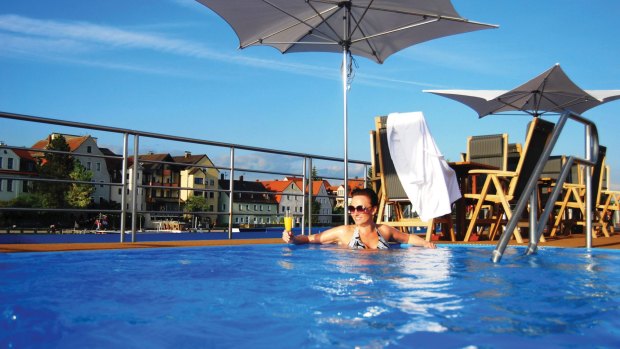
MS Amabella's deck pool.
Goethe was similarly captivated, the 19th-century German lyric poet Heinrich Heine penned his famous poem The Lorelei and Wagner was inspired to write Gottermadderung, the dramatic musical finale of The Ring Cycle.
Victoria and Albert's grand tour in 1845 cemented the trend – it was the place to be and every grand tourist made a beeline. Baedeker published its first travel guide to the region in 1835, spawning mass tourism. Writers like William Thackeray began to satirise the pretensions of British travellers on the Rhine. The river, in effect, had evolved into a modern-day Mykonos!
As the AmaBella negotiates the bends, we learn about each silhouetted castle's history – this one the lair of robber knights, this one the home of a murderous overlord, this one the seat of a righteous nobleman, this one destroyed by the French, this one used as a centre for indoctrination during the Nazi period, this one an old Celtic settlement from 400BC.
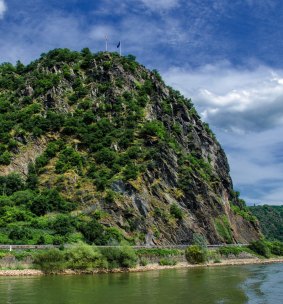
The famous rock Lorelei in the Rhine valleyCredit: Shutterstock
As there are more castles between Rudesheim and Cologne than anywhere in the world, the stories are legion. And what am I hearing now from our commentary? That the average German eats 32 kilograms of sausages annually, choosing from the 1500 different kinds. An excellent fact to chew on as we approach the treacherous bit.
Was there really a beautiful maiden who threw herself from the 132-metre Lorelei rock over a faithless love and was transformed into a siren who lured sailors to their graves?
I want to believe as we edge into this narrowest stretch that the seven rocks on our right peeping from the boiling river were once seven virgins turned to stone.
Equally, was it the Lorelei's voice the sailors heard and not a ghostly echo caused by the large rock on the right bank near Saint Goarshausen? The Lorelei's five-metre statue comes into view – tiny, really, against the majesty of the gorge. Blink and you'll miss it.
Sadly though, myths are there to "monetise". A spanking new leisure centre, outdoor music venue and hotel will sprout on Germany's most famous rock next year. The protesters with their white crosses will go the way of the seven virgins, I fear.
TRIP NOTES
MORE
FLY
Singapore Airlines flies daily to Budapest and Amsterdam from Sydney and Melbourne. Seesingaporeair.com
CRUISE
Magnificent Europe 15-day Budapest-Amsterdam and reverse 2018 cruises cost from $7695 per person with a Fly Free deal for booking before November 30, 2017. Tours operate from March to December. See aptouring.com.au
Alison Stewart was a guest of APT.
Sign up for the Traveller Deals newsletter
Get exclusive travel deals delivered straight to your inbox. Sign up now.